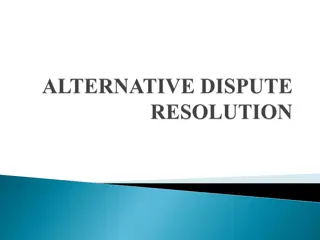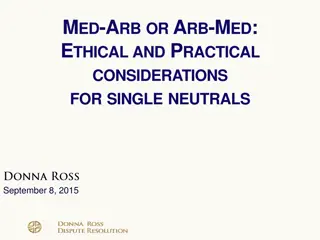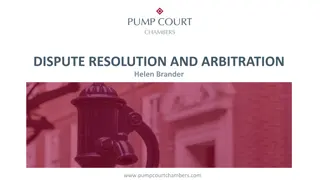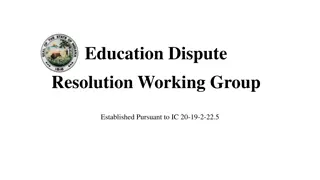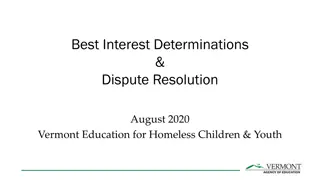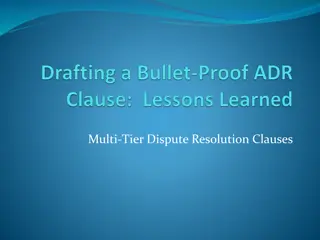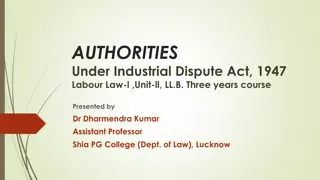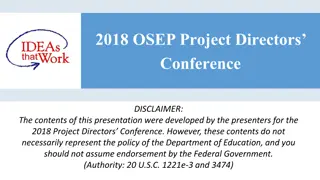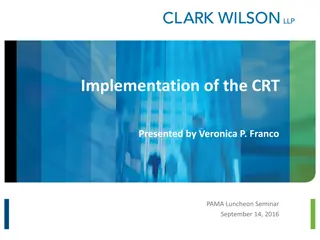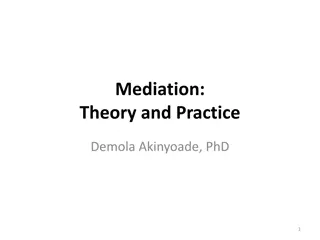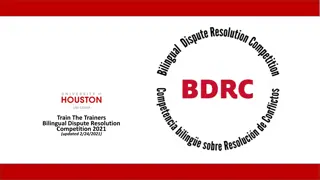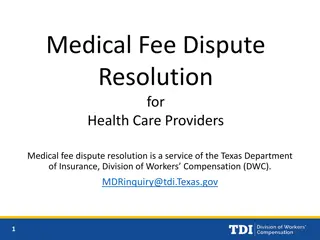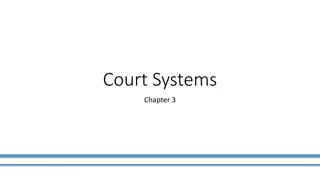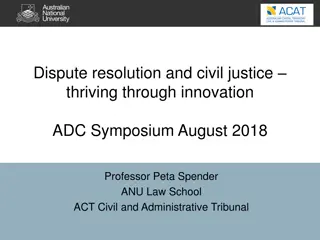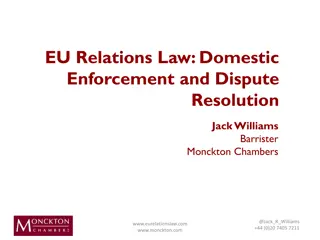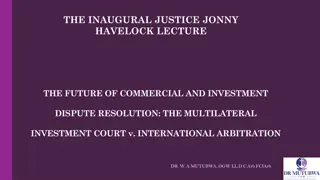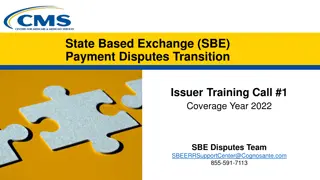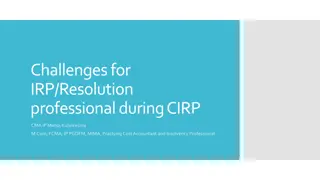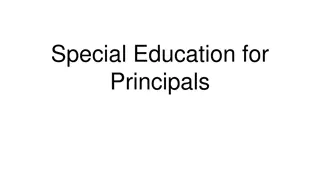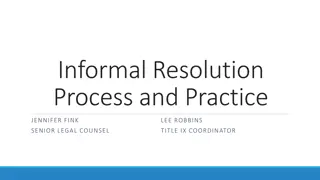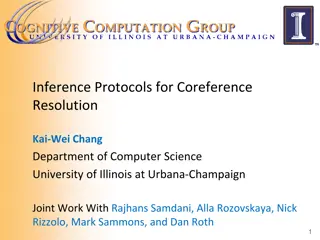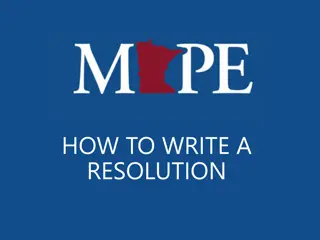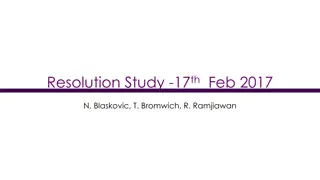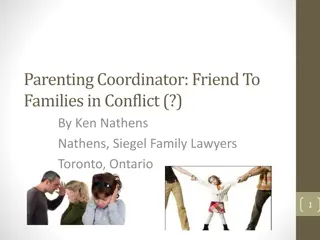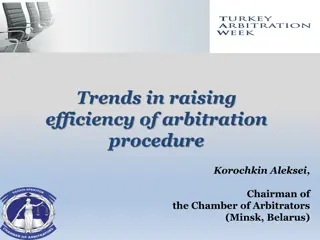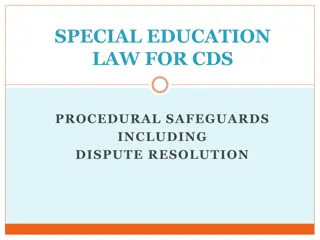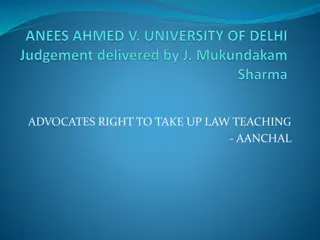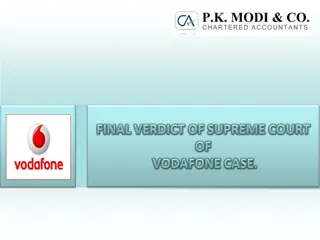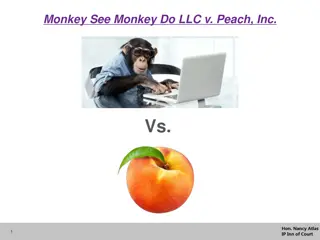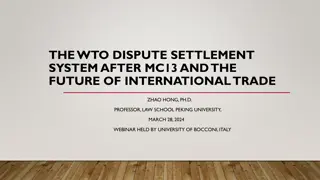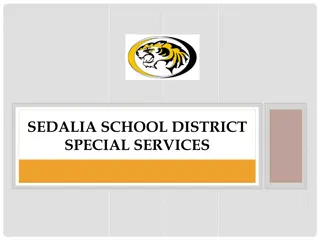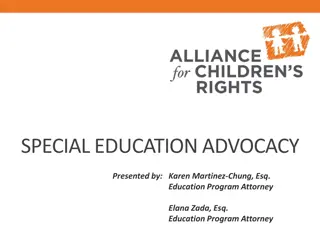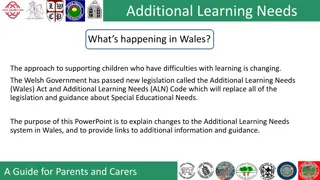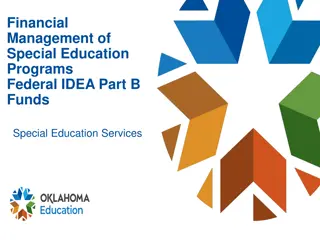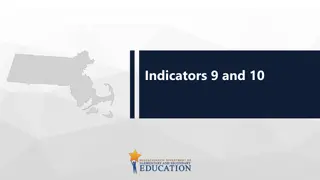Understanding Dispute Resolution in Special Education
Explore the evolution of special education history, from district decisions pre-1975 to the enactment of IDEA in 1990. Learn about the rights ensured by IDEA and the differences between ADA Section 504, IDEA, and State Laws in protecting individuals with disabilities in education settings.
Download Presentation

Please find below an Image/Link to download the presentation.
The content on the website is provided AS IS for your information and personal use only. It may not be sold, licensed, or shared on other websites without obtaining consent from the author. Download presentation by click this link. If you encounter any issues during the download, it is possible that the publisher has removed the file from their server.
E N D
Presentation Transcript
Dispute Resolution in Special Education and The Bigger Picture
Disclaimer This resource is not intended to interpret, modify, replace requirements of federal or State law, or serve as a definitive treatment of the regulations. Application of information presented may be affected by State statutes, regulations, departmental and local policies, and any new guidance not issued at the time of this publication.
Special Education History. Prior to 1975, districts unilaterally decided who received public education. After the enactment of the Education of all Handicapped Children Act in 1975, districts were mandated to provide education to all children with disabilities. The 1980 s increased focus on inclusion in general education. The 1990 s focused on accountability for achievement and outcomes.
Special Education History Continued In 1982, the Supreme Court articulated the Rowley Standard. In 1990, the Individuals with Disabilities Act (IDEA) was signed into law. In 2004, the IDEA was reauthorized with a renewed focus on general education and accountability. In 2017, the Supreme Court ruled on the Endrew F. v. Douglas County School District case and determined that IEP s must give students with disabilities more than a de minimiss, or minimal, educational benefit.
Individuals with Disabilities Education Act (I D E A) Purpose: to ensure that all children with disabilities have available to them a free appropriate public education (FAPE) that emphasizes special education and related services designed to meet their unique needs and prepare them for further education, employment and independent living [and] to ensure that the rights of children with disabilities and parents of such children are protected.
Federal and State Laws. ADA Section 504 Broadly protects all people with disabilities from discrimination at school, work, and other environments. (Provides the lowest level of protection but covers the most people) Students with disabilities, not receiving special education services under IDEA, have the right to reasonable accommodations. Protections for people with disabilities. IDEA State Laws Mandates a free appropriate public education to children with disabilities that emphasizes special education and related services designed to meet their unique needs. (Greater protections than ADA & 504) State laws can interpret federal laws. They should not provide less than the federal law requires but may provide more protections. (May provide greatest protection)
Special Education Eligibility. Child find: States must ensure that children with disabilities in need of special education and related services are identified, located, and evaluated. Assessments and other evaluation measures are completed. 1) Procedures for interpreting evaluation data must draw upon information from a variety of sources. 2) Group of qualified professionals and the parent of the child carefully consider information from all of these sources and eligibility requirements under 300.8 to make their determination. 3) If child is found eligible, an IEP must be developed in accordance with 300.320 through 300.324.
General Education Model: Response to Intervention. RTI cannot be used to delay or deny the evaluation of a child who is suspected of having a disability.
Special and General Education. Students must be provided access to the general education curriculum to the greatest extent possible. Special education and related services should take place in the least restrictive environment (LRE) possible. Other important federal education statutes that provide protections to all students: The Family Educational Rights and Privacy Act (FERPA). The McKinney-Vento Homeless Assistance Act of 1987 (if applicable). Public agencies must also adhere to the Every Student Succeeds Act (ESSA).
The CADRE Continuum: Procedural Safeguards. https://www.cadreworks.org/cadre-continuum
I D E A Mediation Defined. Mediation is an impartial and voluntary process that brings together parties who have a dispute concerning any matter arising under 34 CFR part 300 to have confidential discussions with a qualified and impartial individual. Mediation provides the parties the opportunity to reach a mutually agreeable resolution to the dispute. 34 CFR 300.506
Issues Subject to Mediation. Mediation can address any issue under the IDEA: Identification, Evaluation, Educational Placement and,, Provision of FAP ,E. 34 CFR 300.506
Written State Complaints. States are required to resolve any complaint that meets the requirements of 34 CFR 300.153 of the IDEA, including a complaint alleging that a public agency failed to provide FAPE to a group of children with disabilities. The SEA is in the best position to determine what information is necessary to resolve a complaint, based on the facts and circumstances of the individual case.
Due Process Complaints. States are required to oversee and monitor a due process system to resolve IDEA related complaints. Parents or a public agency can file a due process complaint to request a hearing on any matter relating to the identification, evaluation, or educational placement of a child with a disability or the provision of FAPE to the child.
The CADRE Continuum: Disagreement & Conflict. https://www.cadreworks.org/cadre-continuum
The CADRE Continuum: Prevention. https://www.cadreworks.org/cadre-continuum https://www.cadreworks.org/cadre-continuum
Alternative Dispute Resolution. Most states offer additional options to support family and educator collaboration and address special education issues. Examples include: IEP Facilitation. IDEA Meeting Facilitation. Intermediaries or Case Managers. Ombuds or Third-party Consultations. And more!
Additional State Responsibilities In addition to maintaining an IDEA dispute resolution system, States are required to: Collect and Report Data through their State Performance Plans and Annual Progress Reports (SPP/APR) Provide General Supervision and Monitoring of Local Education Agencies
Data Reports. The State Education Agency must report to the federal Office of Special Education Programs their annual dispute resolution data. Data is collected to inform performance on federally required indicators, with two indicators specifically addressing IDEA dispute resolution systems.
General Supervision & Monitoring. States must have monitoring policies and procedures in place to ensure public agencies are meeting the requirements of Part B, including those related to dispute resolution. 300.149


